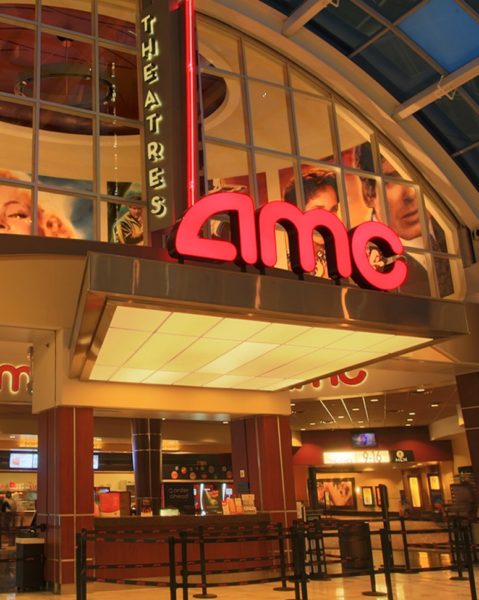In an earnings call with investors held on November 2, AMC CEO Adam Aron laid out the chain’s current financial situation—and the steps the largest exhibitor in North America is taking to make it through the remaining months of 2020 and into 2021.
The third quarter of 2020 saw AMC theaters reopen in much of the United States after a five-month shutdown; as of September 30, the chain had opened 467 of its U.S. locations, making up approximately 78 percent of its domestic footprint. As of November 2, Aron noted, approximately 90 percent of AMC’s U.S. cinemas are open in 44 of the 45 states in which AMC operates. (Cinemas are still not allowed to open in New Mexico.) Internationally, AMC and other exhibitors have been ordered to close cinemas in the UK, Ireland, Germany, Italy, and Catalonia, Spain.
As noted by CFO Sean Goodman, “with a scarcity of big new titles” throughout Q3 2020, “attendance levels in the U.S. hovered between 10 and 20 percent of last year’s levels, while attendance numbers in Europe were only somewhat better.” In the U.S., most AMC locations are operating at a capacity of 40 percent; individual theaters need to hit around the 25 percent attendance mark, says Aron, “to be generating cash rather than losing cash.”
On the subject of limited theatrical releases, Aron cited AMC’s July deal with Universal. That deal means the theatrical exclusivity window for Universal and Focus titles playing at AMC cinemas can shrink to as little as 17 days, at which time those films can debut on PVOD platforms—including AMC’s own. “Specifically because of that agreement,” argued Aron, “Universal currently intends to release six movies theatrically in the fourth quarter, something that no other studio that does not yet have a PVOD window established has been willing to try.” Already released is Focus Features’ Kajillionaire, which opened in theaters on September 25 and went to PVOD 17 days later. Says Aron, citing internal analysis, “We, AMC, made more money with that theatrical/PVOD combo than we would have if it had just exclusively been in theaters.”
Speaking to the possibility of studios bypassing theaters in favor of PVOD for upcoming releases, Aron argued that a “combination of theatrical releases and streaming” via a shortened window is “far more lucrative for [the studios] and certainly for us than if they pick streaming only and ignore the $43 billion—$43 billion—of revenues that movie theaters generated globally last year for the makers of film.”
Added Aron: AMC “is not stuck back in 1955. We are willing to consider alternate models. We understand that the world of streaming is upon us.… [T]he combination of theatrical and streaming will be more lucrative to [studios] but could also be more lucrative to us if we could somehow get participation in that streaming world, as we did with Universal. I think there’s a very compelling case to be made that it is in the studios’ best financial interests not to choose the streaming world over the theatrical world but to figure out intelligently a creative path that lets them navigate towards being able to benefit from both at the same time. And AMC has clearly expressed a willingness and an eagerness to play in that arena.”
Given the small number of films that have been released theatrically in Q3 2020, CFOGoodman notes that AMC currently has “sufficient liquidity to last us through the beginning of 2021”—though that “liquidity runway could be meaningfully extended” if the current November-December slate, including the Christmas release of Wonder Woman 1984, holds strong. AMC is currently seeking to raise additional capital, extending that liquidity runway further. Aron also cited the chain’s August sale of its nine cinemas in the Baltic region.
In cost-saving measures, Goodman notes that approximately half of AMC’s U.S. locations are currently open only on the weekends and that all open theaters “are averaging between one and two showtimes daily, instead of the normal four.” Goodman and Aron alike defend this strategy of cutting back on hours of operation, as opposed to rival Cineworld’s strategy of closing the bulk of their locations in the U.K. and the U.S., where they operate under the Regal brand.
Limited showtimes with weekend-only openings for a large chunk of AMC locations “saves a tremendous amount of operating costs” while also “preventing the stress on our building that stems from prolonged periods of closure,” argues Goodman. “It’s not really much different financially for us to be open, managing tightly the way we are, [versus] closed,” adds Aron. “But the benefits are that we’re still giving the sense to consumers that our theaters are open. That they can see movies when they primarily want to see them, which is weekends.”



Share this post